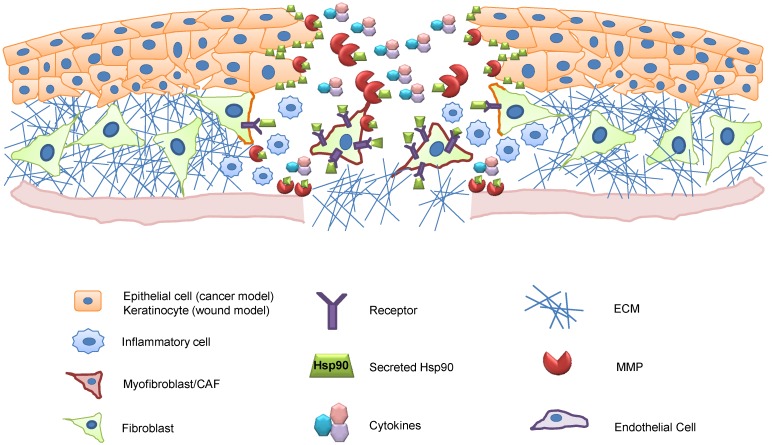Figure 1.
Role of eHsp90 in wound healing. Schema depicts a dermal wound, with the upper layer representing epidermal keratinocytes. Wounded keratinocytes demarking the wound edges secrete Hsp90 (green rectangles). Surface-localized Hsp90 initiates signaling events that promote cell motility into the wound bed. Surface and secreted eHsp90 also activate MMPs to facilitate wound closure, cytokine release, and vascular repair. In tandem, eHsp90-dependent signaling and eHsp90-activated MMPs collaborate to activate fibroblasts to a myofibroblastic-like state (depicted in red). Myofibroblasts are prevalent in close proximity to the wound site, whereas their activation diminishes at more distal sites, concomitant with reduced concentrations of eHsp90. Myofibroblasts play a key role in synthesizing the provisional matrix and creating an inflammatory milieu that is also important for host defense. Key for cell types is shown below.

